What to Do After Aerating Your Lawn
BY TAHA JAVED | AUGUST 7TH, 2023 | BLOGAfter completing the aeration process, your lawn is primed for optimal growth. Knowing the proper post-aeration care is essential to maximize its benefits. In this article, we’ll walk you through pro tips on what to do after aerating your lawn, including watering, overseeding, and fertilizing.
Let’s dive into the article and uncover the secrets to post-aeration success!
Water Thoroughly
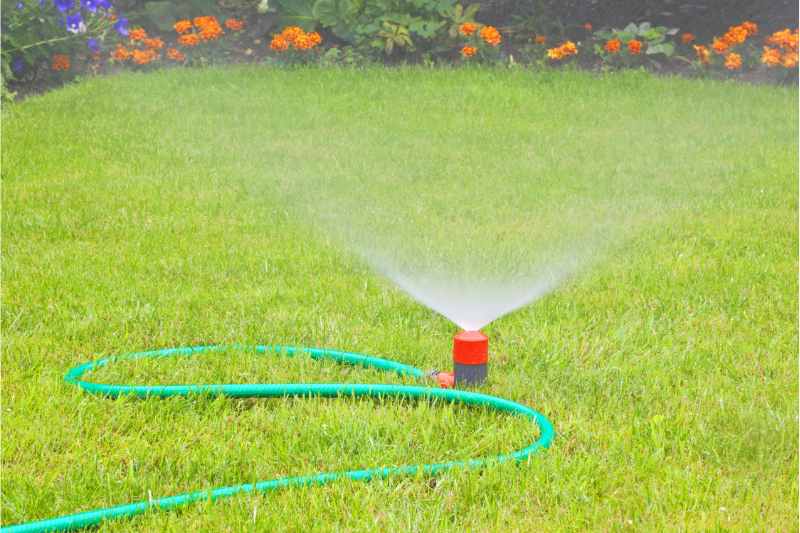
Photo Credit: Lya_Cattel / Canva Pro / License
After aerating your grass, it is crucial to water it properly. Aim to water your lawn within 24 to 48 hours after aeration. The newly created holes in the soil allow water to penetrate deeper, reaching the grassroots more effectively. Watering at this time helps the roots establish and take advantage of the improved soil conditions.
Keep the soil consistently moist, but avoid overwatering, which can lead to water waste and shallow root growth. Use sprinklers or a soaker hose to distribute water across your yard uniformly.
Water in the early morning before 10 a.m. or late afternoon to reduce evaporation and allow grass blades to dry before dark, lowering the risk of lawn disease. Regularly check the soil moisture level and alter your watering schedule accordingly.
Overseed Your Lawn
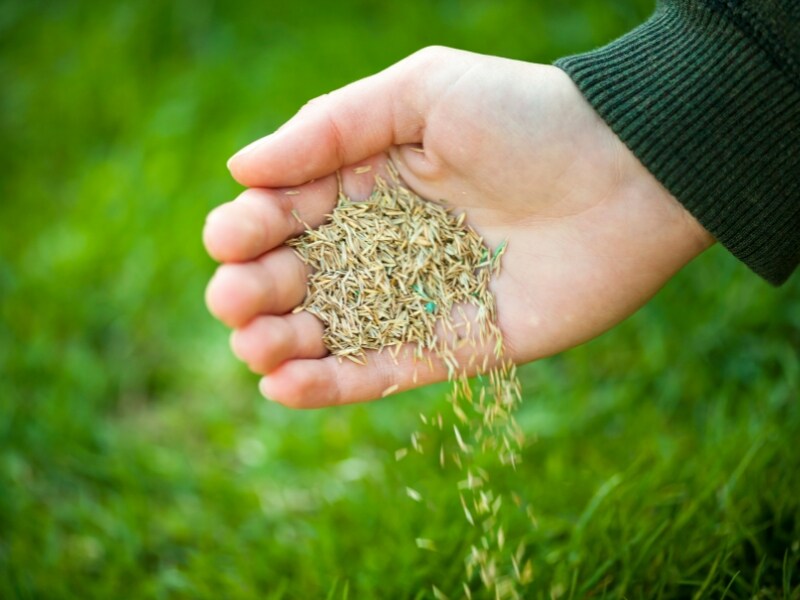
Photo Credit: Elena Photo / Canva Pro / License
Aerating your lawn provides the ideal environment for overseeding. Overseeding involves putting new grass seed over an existing lawn to fill in thin or bare spots and increase overall density. Choose a quality seed combination that fits your type of grass, or get advice from a local lawn care professional.
- For cool-season grasses, the right time to overseed your lawn is early fall when the soil temperatures are between 50 and 65 degrees. This is also the best time to aerate cool-season grass.
- For warm-season grasses, the best time for overseeding your lawn is in late spring when the soil temperature is above 70 degrees. This is also the best time to aerate warm-season grass.
Rake the soil lightly before overseeding to remove the top layer for optimal seed-to-soil contact. Spread the grass seed uniformly. Then rake the area lightly after seeding to cover the seeds with a thin coating of soil. Maintain continuous moisture in newly sown areas by watering daily until the seeds germinate and establish.
Fertilize for Maximum Growth
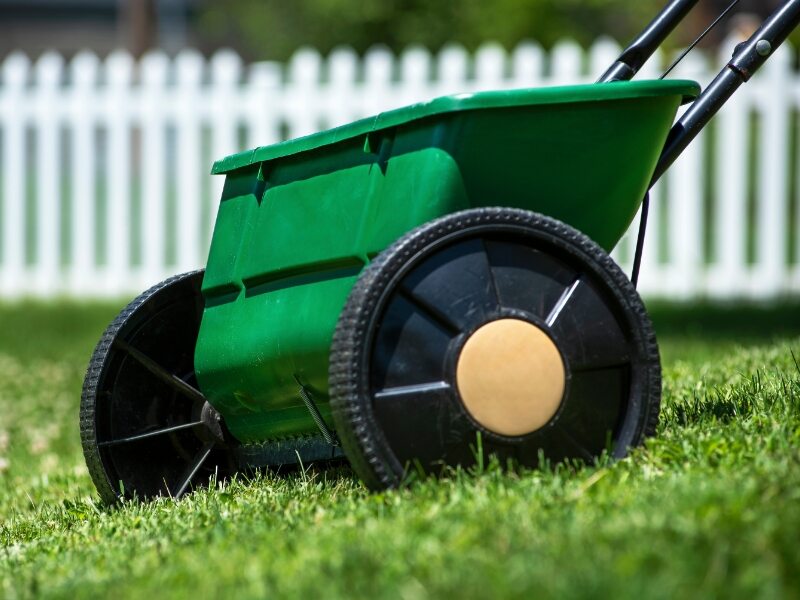
Photo Credit: Jon Rehg / Canva Pro / License
Your lawn will be better able to absorb nutrients after aeration. Aim to fertilize within a few days of aerating, as the newly created holes allow the nutrients to reach the grassroots more efficiently.
A high-quality fertilizer can supply the food required for maximum growth. Look for a fertilizer with a balanced nitrogen, phosphorus, and potassium (NPK) ratio appropriate for your lawn’s grass type.
Read our guide on How to Choose the Lawn Fertilizer to make the right choice for your lawn.
Timing of fertilizer applications according to the grass species in your lawn is also important. Read our guide on When and How to Fertilize your Lawn for a detailed view.
Pro Tip: To avoid overfertilization, follow the recommendations on the fertilizer package for the recommended application rate and frequency. Consider using a slow-release fertilizer, which releases nutrients gradually over time and reduces the danger of fertilizer burn.
Keep an Eye on Weeds
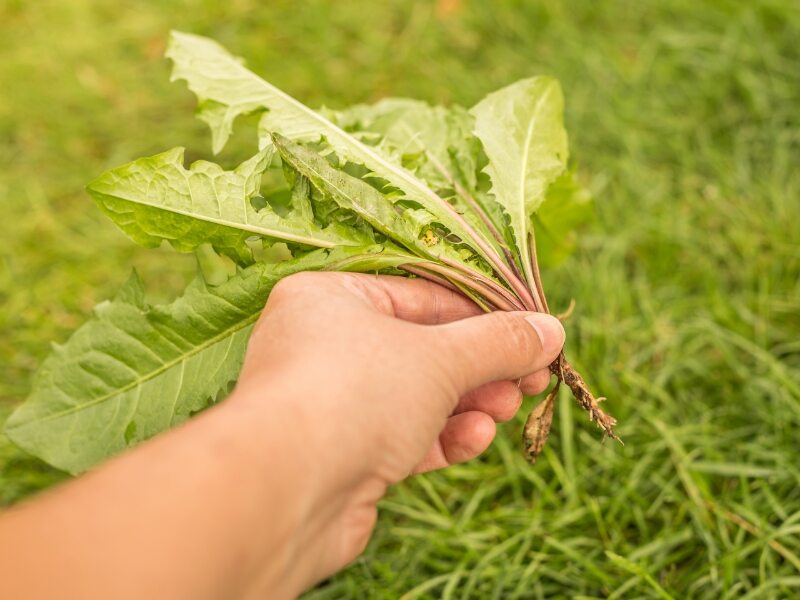
Photo Credit: Cleardesign1 / Canva Pro / License
Keep a watchful eye out for common lawn weeds and promptly address any unwanted invaders. Aeration creates openings in the soil, making it easier for weed seeds to germinate. Use weed control methods like hand-pulling, spot-treatment with herbicides, or natural weed control options.
Consider using pre-emergent herbicides in the spring and fall to control stubborn weeds from sprouting. These products form a layer on the soil’s surface that prevents weeds from developing.
Protect Your Lawn from Foot Traffic and Pets

Photo Credit: Bk_Kang / Canva Pro / License
Limiting foot traffic and keeping pets away from the treated areas immediately after aerating your grass is critical. The holes left by aeration require time to heal, allowing the grass to grow strong, deep roots. Walking or playing on the grass too soon after aeration might disrupt root growth, reducing the overall benefits of aeration.
To avoid unintentional foot traffic, consider installing a small temporary fence or posting signage to draw attention to newly aerated areas. Redirect your pets to different parts of the yard or keep them on a leash until the grass has recovered completely. You can gradually reinstate regular foot traffic and pet activities after a week or so once the grass has had time to regrow.
Practice Routine Lawn Maintenance
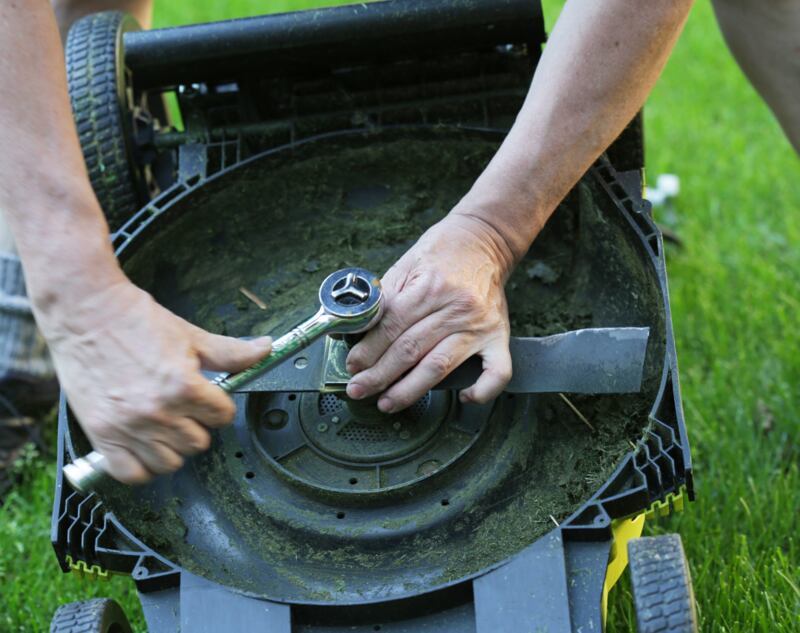
Photo Credit: KathrynHatashitaLee / Canva Pro / License
Keeping up with a consistent lawn maintenance program is critical for your aerated lawn’s long-term health and attractiveness. Your lawn care routine should include not only proper watering and fertilization but also mowing at the right height for your grass type, soil testing at least every few years, clearing debris and thatch, and inspecting for disease regularly.
Set your mower to the proper height for your grass type once it reaches a height of 4 inches after aeration. Only cut up to one-third of the grass’s length in a single mowing session. This promotes healthy root growth and protects the grass from stress. The ideal mowing height and frequency for the most common grasses are listed in the table below:
| Grass Species | Mowing Height (inches) | Mowing Frequency (times per week) |
| Zoysia | 1-2 | 1-2 |
| St. Augustine | 3.5-4 | 1-2 |
| Kentucky bluegrass | 2.5-3.5 | 1 |
| Fine fescue | 2.5-4 | 1-2 |
| Tall fescue | 2-3 | 1-2 |
| Perennial ryegrass | 1.5-2.5 | 1 |
| Bermuda | 1.5-2.5 | 1-2 |
Remove fallen leaves, twigs, and other debris from the lawn as soon as possible since they can suffocate the grass and provide a breeding ground for pests and fungal diseases.
In terms of bugs, keep an eye out for indicators of infestation, such as brown patches or chewed grass blades. Treat any pest problems with appropriate insecticides or, if necessary, seek expert help.
Test your soil at least once every three years to determine its acidity or alkalinity level. The pH of the soil influences the availability of nutrients to the grass. If the pH of your lawn is too high or too low, consider adding lime to raise it or sulfur to lower it.
FAQ About Post-Aeration Lawn Care
How soon can I mow my lawn after aerating?
It is best to wait a few days after aerating before mowing your lawn. It gives the grass time to recuperate and the soil time to settle. If the grass has grown too long, you can softly trim it, taking care not to cut too low and stress the grass.
Should I rake up the plugs of soil that aeration has left on the lawn?
No, you don’t have to remove the soil plugs from your lawn. If you leave them out, they will gradually break down into the soil, adding nutrients and organic matter that will help your grass in the long run.
What are the different methods of lawn aeration?
Two standard methods for lawn aeration are spike aeration, which pokes holes in the soil, and core aeration, which removes 2 to 3-inch plugs of soil. Both methods offer benefits, but core aeration is generally preferred for better results.
When is the right time to aerate my lawn?
It is best advised to aerate a cool-season lawn in fall and a warm-season lawn in late spring to early summer. For more detailed information, visit our article When and How to Aerate Your Lawn.
How long will the advantages of aeration last?
Aeration can provide benefits for several months, but it is not permanent. Aeration should be done regularly, at least once every two or three years, to keep the soil loose. The frequency might vary depending on soil compaction, grass type, and general soil condition.
Final Thoughts
Lawn aeration boosts nutrient absorption and encourages healthy root growth by reducing soil compaction. Sometimes homeowners might need help figuring out what to do after aerating the lawn. But by reviewing this article, you can figure it out and plan ahead. If you are still trying to decide whether to do the post-aeration chores on your own, you can ask for professional advice.
Contact a local lawn care service provider and get help to ensure your lawn thrives and remains lush after you aerate it.